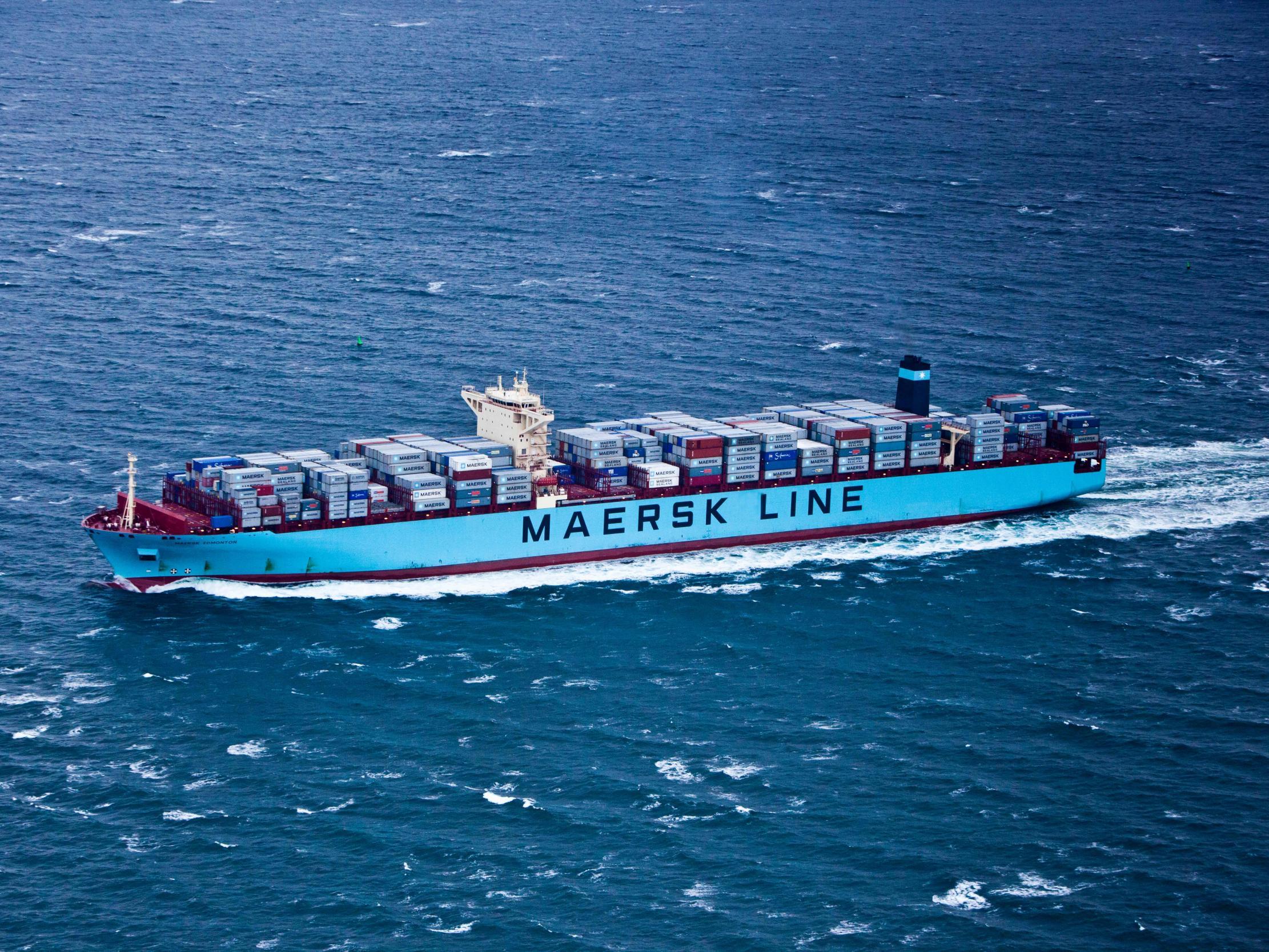Maersk launches first container ship through Arctic route in alarming sign of global warming
42,000 ton vessel carrying cargo of frozen fish will leave Vladivostok for St Petersburg this week

Your support helps us to tell the story
From reproductive rights to climate change to Big Tech, The Independent is on the ground when the story is developing. Whether it's investigating the financials of Elon Musk's pro-Trump PAC or producing our latest documentary, 'The A Word', which shines a light on the American women fighting for reproductive rights, we know how important it is to parse out the facts from the messaging.
At such a critical moment in US history, we need reporters on the ground. Your donation allows us to keep sending journalists to speak to both sides of the story.
The Independent is trusted by Americans across the entire political spectrum. And unlike many other quality news outlets, we choose not to lock Americans out of our reporting and analysis with paywalls. We believe quality journalism should be available to everyone, paid for by those who can afford it.
Your support makes all the difference.Maersk Line, the world’s largest container shipping company, is about to launch the first ever container ship on an Arctic route along Russia’s north coast, as melting sea ice promises to offer a possible future alternative to the Suez Canal.
The Venta Maersk, a new ice-class 42,000 ton vessel which can carry 3,600 containers, will leave Vladivostok on Russia’s east coast later this week.
The ship, carrying a cargo of frozen fish, will then follow the Northern Sea Route up through the Bering Strait between Russia and Alaska, before travelling along Russia’s north coast and eventually to St Petersburg by the end of September.
The route has seen growing traffic during summer months already, with cargos of oil and gas regularly making the journey.
Arctic sea ice hit a record low for January this year, and an “extreme event” was declared in March as the Bering Sea’s ice levels reached the lowest level in recorded history as temperatures soared 30 degrees above average.
Data released by the National Snow and Ice Data Centre in Colorado showed this winter’s sea ice cover was less than a third of what it was just five years ago.
Though the Northern Sea Route can cut journey times between Asia and Europe by up to two weeks depending on destination, it remains more costly as nuclear icebreakers are still required to accompany ships.
In an email to The Independent, Maersk confirmed the undertaking as first reported by Norwegian newspaper High North News. A spokesperson said the company wanted to “underline that this is a one-off trial designed to explore an unknown route for container shipping and to collect scientific data”.
Speaking about the viability of the route, they added: “We of course also want to have a product which is cost efficient enough to generate a reasonable return. Currently, we do not see the Northern Sea Route as an alternative to our usual routes.”
With a reduction in sea ice, that may change however. The spokesperson said: “We do follow the development of the Northern Sea Route. Today, the passage is only feasible for around three months a year which may change with time.”
Sune Scheller, of Greenpeace Nordic, told The Independent the organisation was aware several shipping companies were looking at the possibility of opening Arctic shipping lanes – a move he said was “environmentally damaging in a number of ways”.
Chief among environmental concerns is the use of the heavy fuel oil large container ships use. According to The Economist, “just 15 of the biggest ships emit more of the noxious oxides of nitrogen and sulphur than all the world’s cars put together”.
Mr Scheller said: “It’s cheap, but it’s damaging. It’s more polluting, air quality-wise. It adds to particulate matter – black carbon, as it’s known – which rests on white surfaces like ice and snow and absorbs heat instead of reflecting it, which contributes to climate change.
“If these ships were to have an accident then heavy fuel oil in the marine environment is bad. It’s even worse in an Arctic environment. The cold water temperatures slow or halt the natural breakdown of the oil. So it remains in marine environments for a much longer period of time.
“In the Antarctic there is a ban on heavy fuel oil. You are not allowed to use it within the wider Antarctic. But a similar ban in the Arctic is not in place. This is a reminder for the IMO (International Maritime Organisation) that the shipping industry is looking at this [route] in increasing detail, and they need to get a ban in place now.”
Friends of the Earth climate campaigner Oliver Hayes said declining sea ice was a sign more needed to be done to protect the planet from “catastrophic” environmental degradation.
He told The Independent: “Vanishing sea ice is another stark warning that climate change is already having a drastic impact on our planet and its people.
“Governments must do everything within their power to head off the threat of catastrophic climate change, first by taking rapid steps to slash the gases polluting our atmosphere.
“Increases in Arctic shipping also threaten the region’s precious environment. The international community must agree tough action and rules to protect it.”
Speaking to High North News, Frederic Lasserre, a Professor at the Universite Laval Quebec, said Maersk will be aware that other shipping companies are examining the viability of the route, including its Chinese rival Cosco, and Mitsui OSK Lines (MOL).
He said: “Maersk, in my view, may be merely trying to see what can be done so as to be able to develop this small market should other players – Cosco, MOL – officially begin to develop it.”
Join our commenting forum
Join thought-provoking conversations, follow other Independent readers and see their replies
Comments